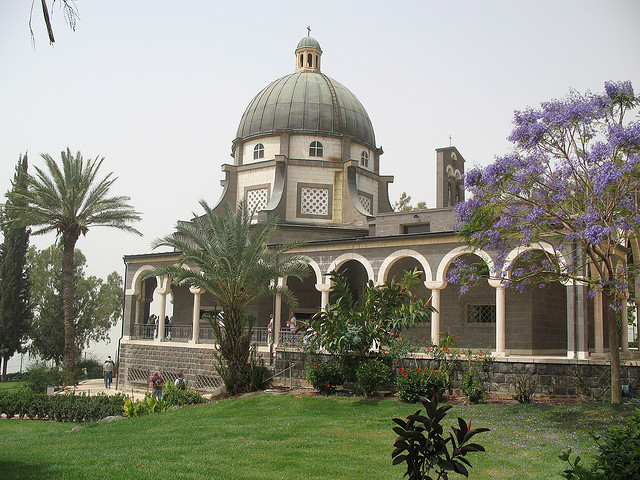The Sea of Galilee – let this be the starting point for our wanderings around the land that was home to Jesus and his disciples.
Tiberias is the town from which most of today’s visitors make the start to their appreciation of the area. A short boat trip across the water to Capernaum is a high spot: half way over the skipper orders, “Stop engines.” You just drift in the intoxicating silence.
The Israelis have taken great care to ensure that no sign of the modern world, such as telephone wires, is allowed to disturb the serenity. Green hillsides slope down to the water’s edge and you gradually realise that the picture before you is exactly the same as that seen by Jesus whenever he joined his friends in their fishing boats. Magical.

Capernaum
You leave the boat at Capernaum, the home of the disciples and the place associated with much of the teaching of Jesus. There stand the remains of the synagogue built in the period of Roman occupation: up that street used to stand the house of Peter and his mother. Few places are so redolent of Jesus and his followers. At any moment you may turn a corner and expect to find a group of them listening to one of the marvellous parables.
The New Testament comes alive
The New Testament comes alive when you stroll through this region. In this area are to be found churches associated with the miracles and teachings of Jesus, including my favourite, The Church of the Beatitudes, which stands on the site of the Sermon on the Mount.

As it is on the top of the hill overlooking the northern end of the Sea of Galilee the view from the garden behind the church shows the sun’s rays shining from the south on the entire stretch of water.
What you see is a vista of shimmering sea surrounded by gently sloping green hill slopes. To my mind it is the finest view in all of Israel.

Not all Garden of Eden stuff
Mind you, it is not all Garden of Eden stuff here in the more northerly parts of the terrain.
On one of my visits my school party and I spent a few nights in the guesthouse of the Kibbutz Kfar Giladi, very close to the border with Lebanon. As we wandered around the grounds after returning from a trip to Nazareth we noticed there were numerous small mounds, each surmounted by a metal chimney.
“What are they, sir?” I was asked.
Not knowing the answer, I agreed to find out. To my surprise I found they were bomb shelters. During the conflict with Lebanon they had been forced to make their children live underground, because the Lebanese, who occupied the higher ground, used to train their binoculars on the kibbutz and open fire on any unsuspecting movement they observed, using mortars. “Love your enemy as yourself.”

The head of the kibbutz and his staff tried to give our children a better reminder of those shelters by organising a disco for them one evening in the largest of them. Strictly Come Dancing, not Killing.
Related posts:



Leave a Reply